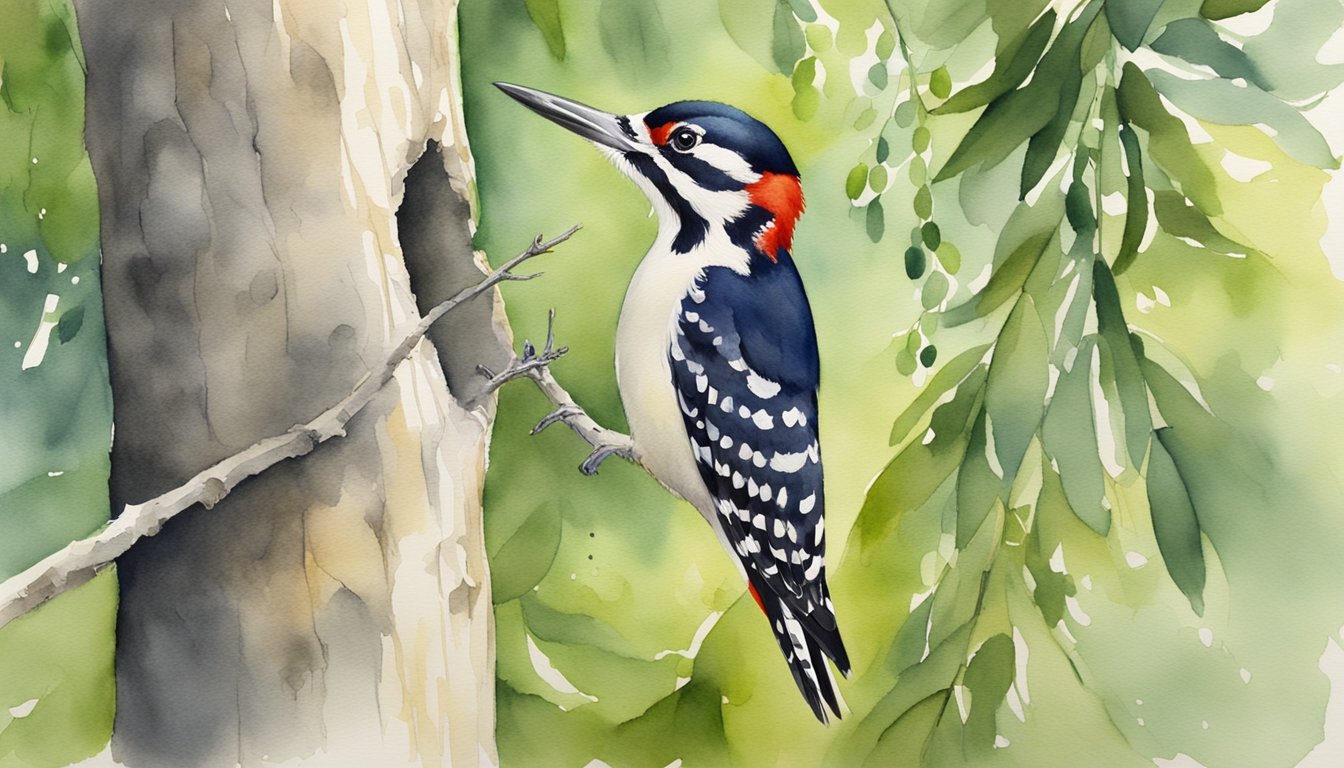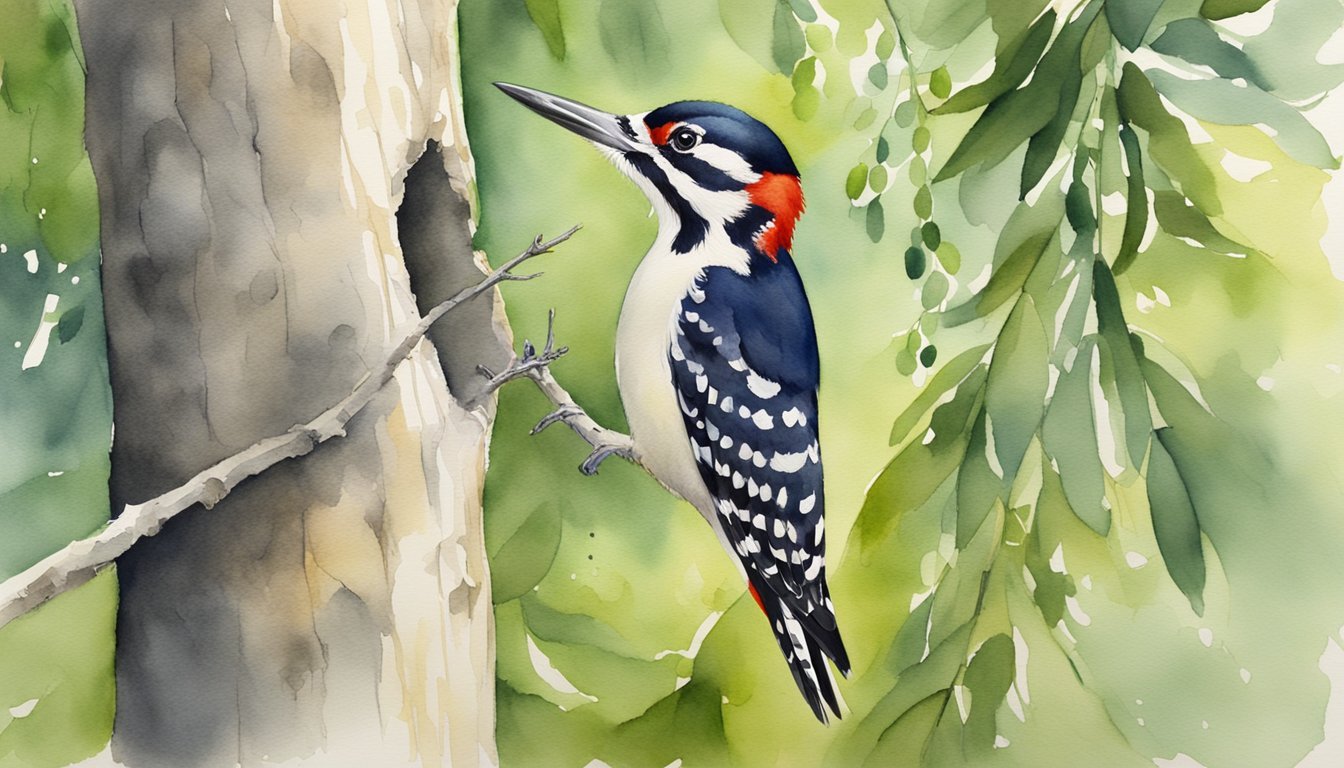Woodpecker Anatomy and Adaptations
Woodpeckers are a marvel of nature, with their anatomy finely tuned for their tree-drumming lifestyles. From shock-absorbing skulls to extendable tongues, these birds exhibit incredible adaptations for feeding and communication.
Skull and Brain Structure
The skull of a woodpecker is a testament to nature’s engineering. With each peck, woodpeckers subject their skulls to tremendous impact forces, yet their brains are protected from injury. This is due to several unique features, including a spongy bone structure that cushions the brain and minimizes deceleration. Their small brains are tightly fitted within the skull, reducing the potential for damaging movement.
Woodpecker skulls are not only rigid but also connected to strong neck muscles, enhancing their ability to withstand repeated impacts. This, in combination with an overhang of the brain case and a specialized tail structure that supports a woodpecker’s weight against a tree, allows them to hammer away without sustaining concussions that would seriously harm other animals.
Tongue and Beak Features
Among the most remarkable of woodpecker features is the long tongue, which can be extended far beyond the tip of the beak to collect insects from deep crevices within trees. The hyoid apparatus—a series of bones and muscle that supports the tongue—wraps around the woodpecker’s skull, allowing for this significant extension. Woodpecker tongues vary in size and shape, with species like the red-bellied woodpecker demonstrating long, barbed tips for extracting prey from inside trees, coupled with sticky saliva to better catch insects.
Meanwhile, their beaks have evolved to act not only as chisels for digging into wood but also as a resonating chamber when drumming, used in communication. Some woodpeckers, like the sapsuckers, have developed beaks and specialized tongues for consuming tree sap instead of hunting for larvae or insects. The diversity in woodpecker tongues reflects the varied diets and feeding strategies across different species, showcasing the adaptability and evolution of these fascinating birds.
Feeding Behavior and Ecological Impact

Woodpeckers are remarkable birds known for their unique foraging habits, which play a significant role in the balance of woodland ecosystems. Their tongues, specialized for extracting insects such as grubs from trees, can be exceptionally long and coiled around their skulls when not in use. This extraordinary adaptation enables woodpeckers to reach deep into tree bark to access their prey.
Their feeding behavior has evolved in tandem with certain physical traits. For instance, the species of woodpeckers with an extremely long tongue have it anchored around the brain and right nostril. Their sharp beaks provide the necessary force to drill into trees, while their sticky saliva helps them to capture and extract insects from within the tree.
Another fascinating species, sapsuckers, create methodical rows of holes in tree bark not only to feast on the sap but also to create an ecological niche for other species. For example, hummingbirds are often seen following sapsuckers to feed on the sap and insects attracted to it.
The impact of woodpecker foraging extends further into preventing the spread of certain tree diseases caused by bacteria or insects. As they search for food, they inadvertently control pest populations and help maintain healthy tree communities.
Research also connects woodpecker feeding behavior with advances in materials science, as their shock-absorbing beak structures and brain protection inspire innovations in protective gear.
The complexity of woodpecker feeding habits reveals a deep interconnectedness with the forest ecology, showcasing the birds not only as impressive insect hunters but also as critical contributors to the environment’s health.

